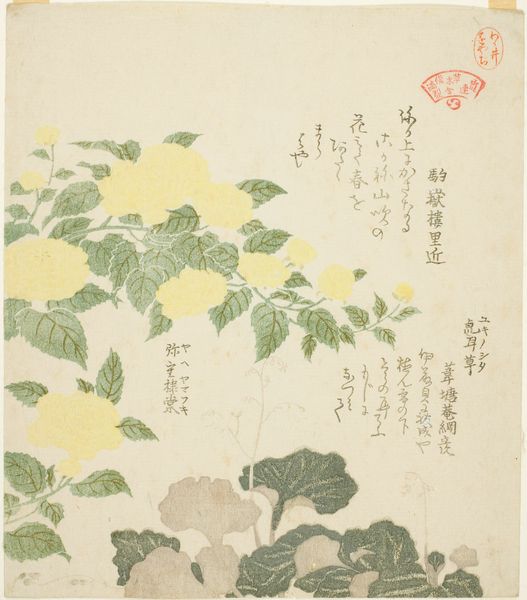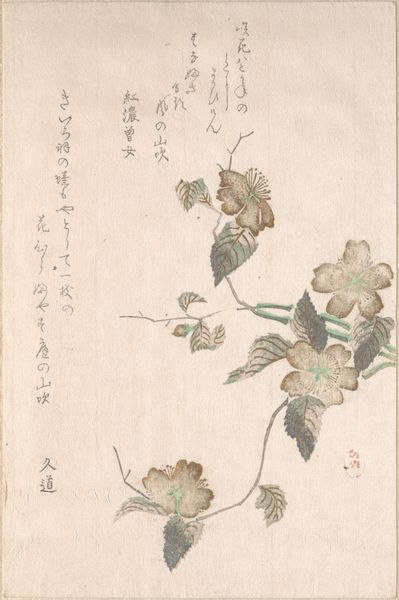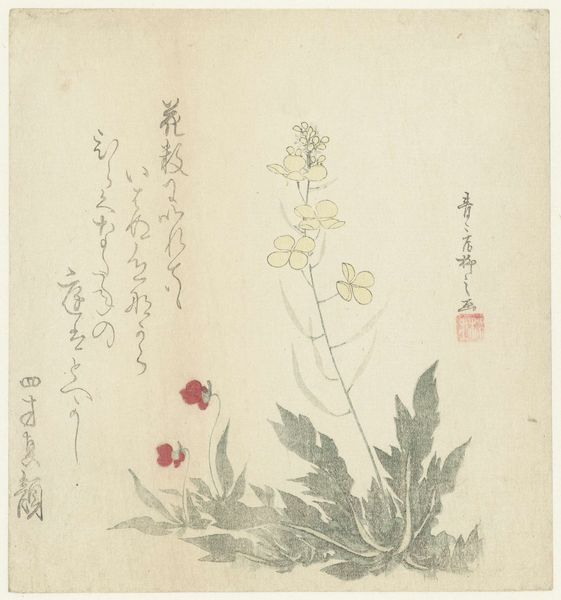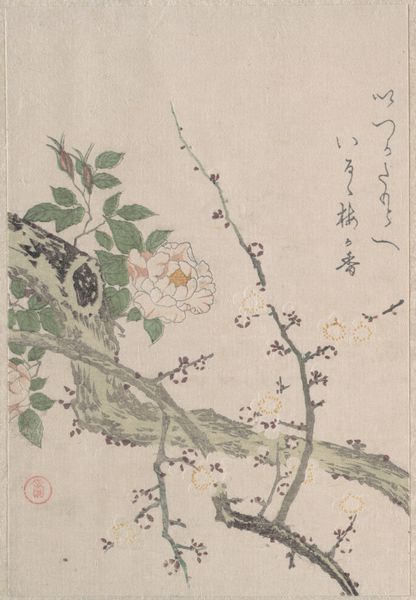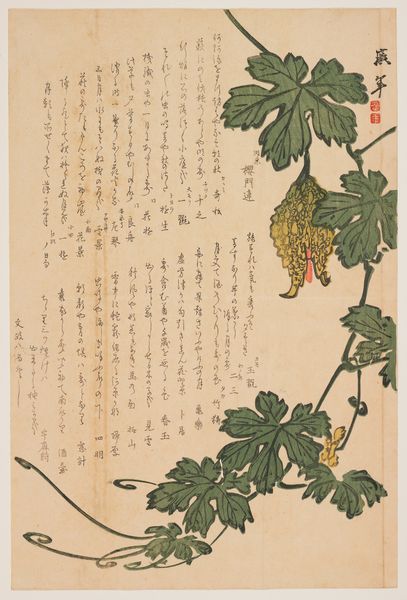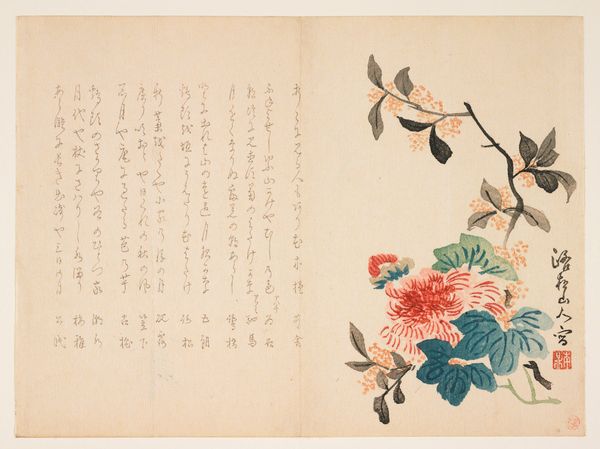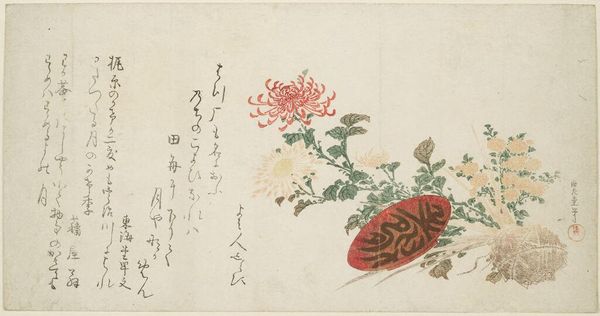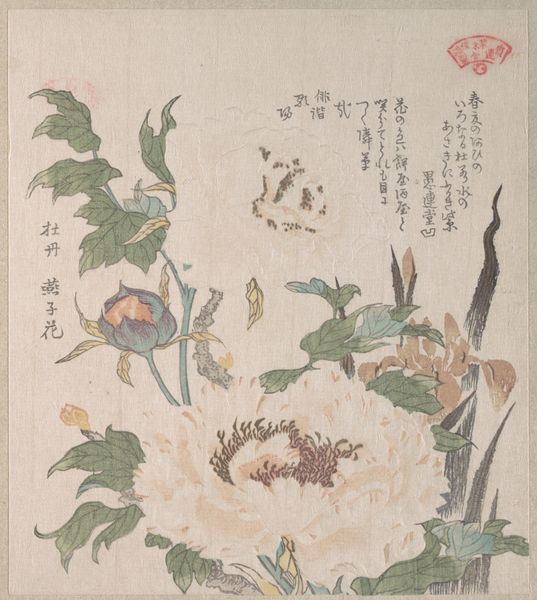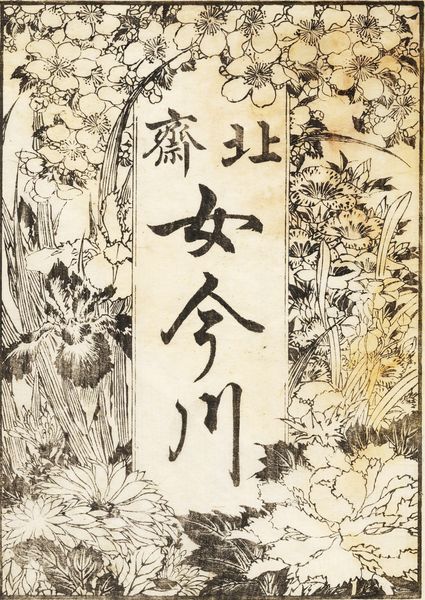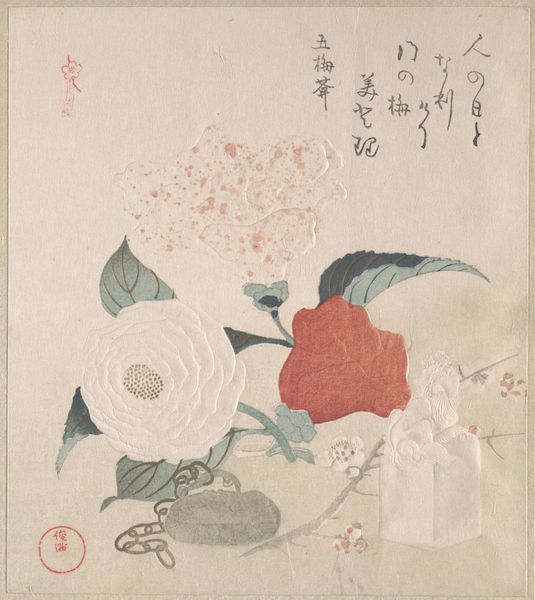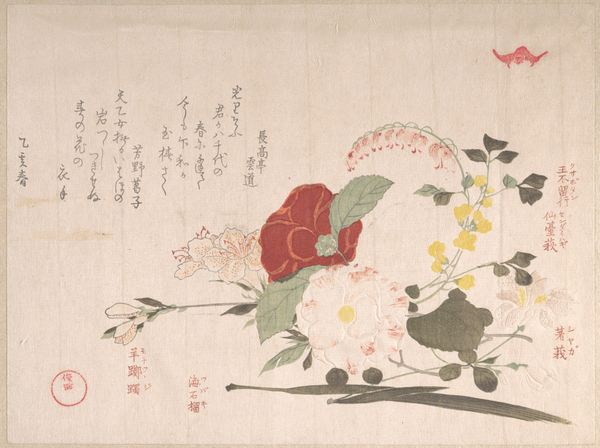
print, paper, watercolor, woodblock-print, woodcut
# print
#
asian-art
#
ukiyo-e
#
paper
#
watercolor
#
woodblock-print
#
woodcut
Dimensions: 12 1/8 × 5 3/8 in.
Copyright: Public Domain
Curator: Before us, we have "Peonies and Chinese Lions," a c. 1762 woodblock print colored by hand, attributed to Suzuki Harunobu, currently residing here at the Art Institute of Chicago. It's a striking example of ukiyo-e art. Editor: It strikes me as so delicate, a whisper of color. The composition seems to defy gravity, those lions practically floating amidst the peonies. What can you tell me about the medium? Curator: Well, the creation process itself speaks volumes. These prints weren't merely individual expressions but collaborative ventures. The artist, the block cutter, and the printer all contributed specialized labor. This system fostered a unique kind of image making tied directly to commercial interests. Editor: Absolutely, but focusing on the piece itself for a moment: The lines are so precise, the color so meticulously applied despite being a print. How does Harunobu achieve this visual lightness, given the medium’s inherent constraints? Curator: He mastered it. His technical skill is evident. The carving of the woodblocks needed an expertise and sensitivity. The application of color washes and the paper quality itself are vital to capturing that ephemeral feeling. But, the demand for prints and affordable art surely shaped the techniques too, no? Editor: I agree on its technical sophistication. Structurally, the artist guides our eye skillfully, leading it along the blossoming branches and onto the protective presence of the guardian lions. The symbolic relationship between the strength and courage that the lions traditionally convey and the transient beauty of the flowers is remarkable. Curator: The symbolism absolutely echoes certain consumer values. Ukiyo-e were objects of desire, often portraying idealized scenes of pleasure, leisure, or fashionable icons. The imagery would therefore attract an audience that could obtain them due to specific socioeconomic reasons. Editor: So the interaction between labor, distribution and a taste for ephemeral beauty becomes palpable here. This allows us a glimpse into the cultural values and class distinctions of the era in which the work was consumed. Thank you for elucidating the work! Curator: Of course! Analyzing "Peonies and Chinese Lions" shows not only a historical approach to printmaking, but gives a tangible portrait to consumer demands, class values, and collaborative methods of production and circulation.
Comments
No comments
Be the first to comment and join the conversation on the ultimate creative platform.
